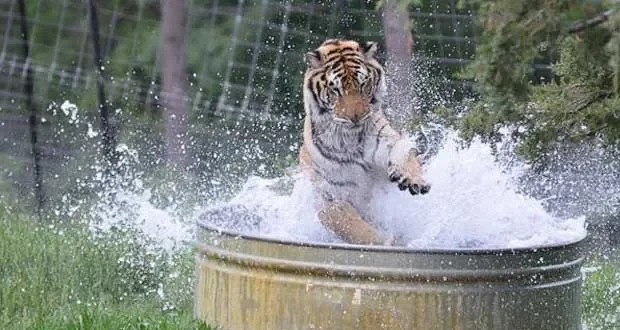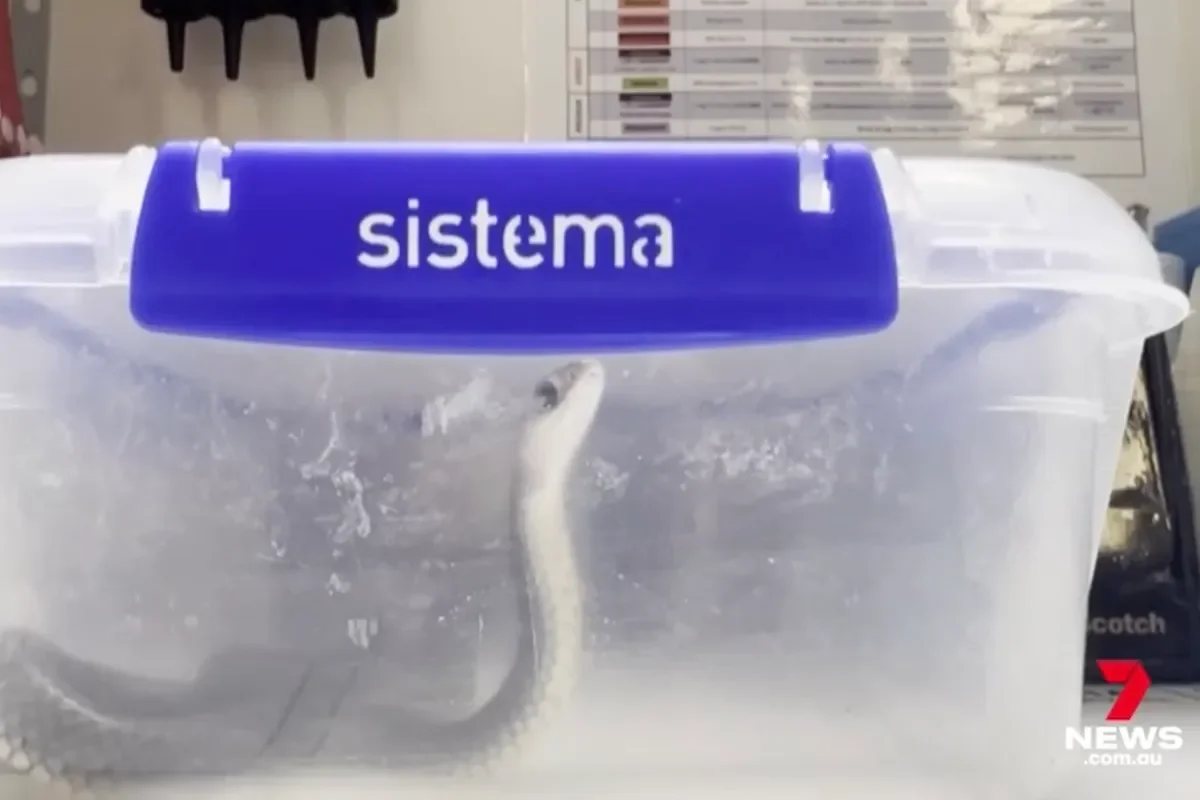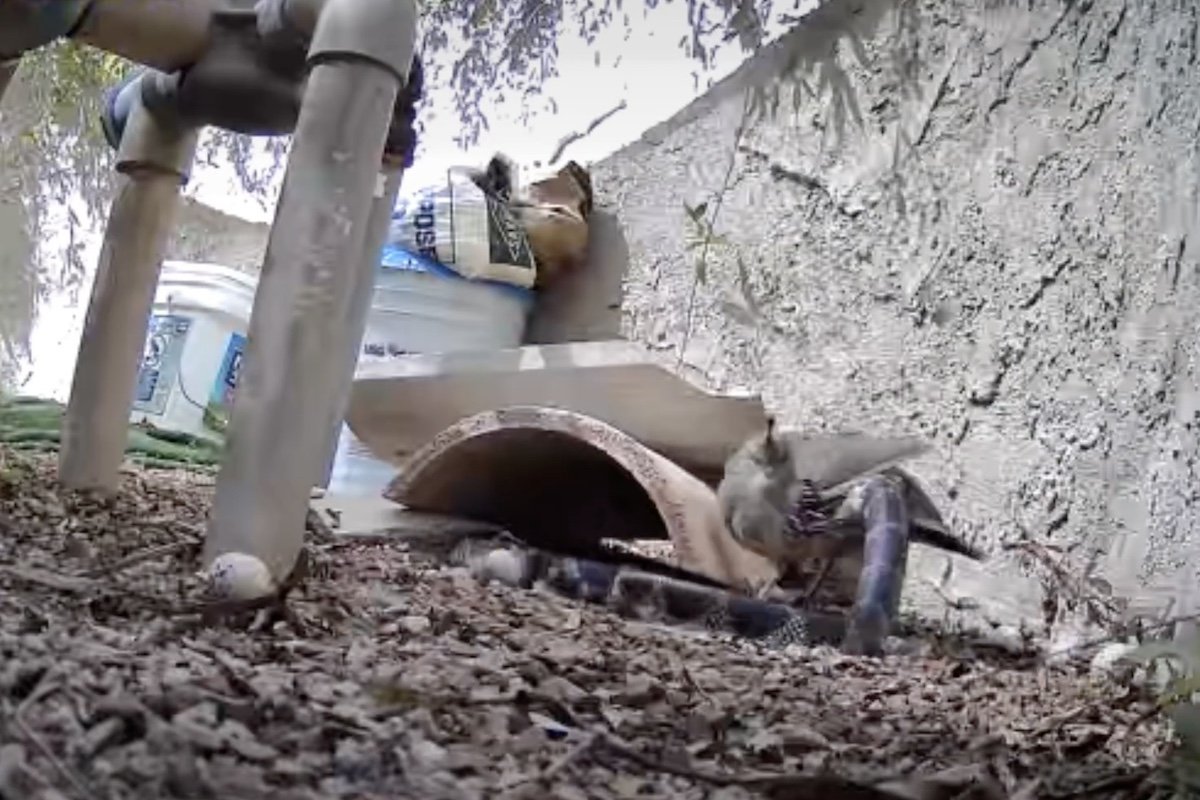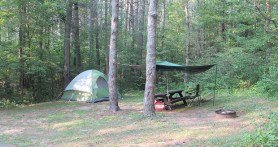

Camp Arkansas had the chance to speak with Eric Studer from the Turpentine Creek Wildlife Refuge. He talked about the favorite parts of his job, wild cats and treehouses. Listen to our full interview here:
Turpentine Creek Wildlife Refuge Camping
Camp Arkansas: All right, today I’m talking with Eric Studer from Turpentine Creek Wildlife Refuge. I’ve been looking forward to this interview all day, because this is a pretty unique place. So, let’s kind of just start with the history of the park and how it got its start, Eric.
Eric Studer: Well, Turpentine Creek was started twenty years ago here, in Eureka Springs. It actually started in Eastern Texas with the Jackson Family, and they adopted a male lion cub and pretty soon realized how many other people needed to have been cats adopted from private ownership. And so, they eventually moved here, twenty years ago, to Eureka Springs, Arkansas, and we have a 458-acre refuge, and it’s one of the largest big cat sanctuaries in the United States. We have a 120+ big calf along with other danger wildlife. And we offer onsite lodging – a safari lodge. We offer campgrounds and also an RV park. And we generate 70% of our revenue through our business offerings, whether that’s lodging, gift shop sales, or admissions to the refuse with daily guided tours. And so, we’re considered one of the most successful refuges in the country.
CA: Wow, that’s absolutely amazing to me. So, I didn’t realize it was that common for people to have to give up their cats. How does that work? What are the most common reasons that a big cat will come into your facility?

Eric Studer: Well, there’s more big cats in captivity in the United States than exists in the wild between tigers, lions, cougars, and one of the issues that’s coming from the United States today is legislation in regards to private ownership of these types of wild animals, whether that’s state-level legislation or Federal legislation. But the black market for big cats – well, it was pretty unrestricted for many years, so a lot of people decided that, you know, it’d be great to own a big cat. You know, everybody from celebrities, like Mike Tyson, down to, you know, your neighbor down around the street. And the average cost for a big cat annually for food, care, veterinary clinic, etc. is about ten thousand dollars a year.
CA: Wow.
Eric Studer: So, as more legislation makes it tougher to deal with exotics and endangered species, there’s going to be more and more of a demand for refuges and sanctuaries like Turpentine Creek. And you know, everybody loves a lion cub, but they eventually grow up to be 650-pound killers. And so, between insurance and everything else, a lot of people find themselves in a situation where they can no longer afford it and these animals need a lifetime home, and this is where they come.
CA: Okay. So, what sort of interaction do you guys have with the pets there are as employees?
Eric Studer: Well, these are wild animals, and they’re always treated as wild animals. We have one of the most successful pen-tern programs in the United States. We have 17 college seniors that live onsite and stay six months with us, and take care of the daily care and feeding of the animals. In no way is it like pet ownership.
CA: Sure.

Eric Studer: Our biggest objective is to allow these animals to have a lifetime home where they’re properly cared for, where they’re not going to be taken anywhere else, and we provide large natural habitats for them. We have a lot of cats that never felt grass between their paws. And all of a sudden, we put them into a half-acre of grass and, you know, trees – natural environment – where they can play. We have soaking tubs for them, because most of the big cats love the water. And so, we try to provide them a lifetime home that’s as natural as you can get in captivity.
CA: Okay. All right. Now let’s talk about the lodge in there. That’s one of the main things that our listeners would be interested in. So, I’m looking on the website here, and you guys have four separate lodges, and they’re kind of connected in sort of a big octagon kind of outdoor platform. And it looks pretty cool. I know those are fabric covered.
Eric Studer: Yeah, they’re fabric covered, but they’re hard-walled.
CA: Yeah.
Eric Studer: They’re built reminiscent of African Safari lodges. And there’s a central area between all of those that provides a fire pit and also an outdoor Jacuzzi. So, you can listen to the lions at night when you go to sleep. And in front of the Safari Lodge is our campgrounds and our RV park.
CA: Okay, so you guys do have a campground as well. People can tent there?
Eric Studer: Absolutely, yeah.
CA: Wow, that sounds like a lot of fun. And you have – it also looks like there’s a treehouse. Tell me a little bit about that.
Eric Studer: Yeah, because the refuge was built over a number of years, they developed different types of lodging. We have two rooms that overlook the enclosure habitat so people can wake up and see the tigers first thing in the morning, sitting on the porch with their morning coffee. And then we have one treehouse cabin, and it’s primarily for people with young kids. It’s pretty small, but it’s got an outdoor deck, and it overlooks a couple of the tiger enclosures, and so it’s very unique in regards to lodging alternatives here, in Arkansas.
CA: Yeah, and it looks like you guys also have several, looks like six, RV spots for hookups, and those all have 30 and 50-amp power outlets. Correct?
Eric Studer: Correct.
CA: Okay. Now what would you say your favorite thing about the Turpentine Creek Wildlife Refuge is? What’s your favorite thing about working there?
Eric Studer: Well, the most fulfilling thing is the fact that these are animals that, regardless of where adopted them from, were not getting proper care. Whether that’s veterinary care or dietary needs, or what have you. And in a lot of cases, a lot of these cats were in concrete enclosures or in barns, or what have you, with no proper ventilation or lighting. And so, taking an animal like that and putting them into a 1/8-acre or 1/2-acre enclosure with trees and grass, and allowing them to run and enjoy the sunlight is extremely gratifying.
CA: That has to be a pretty fun thing for the visitors to witness as well.
Eric Studer: Oh, no question. And we play a great educational role within the community. As a matter of fact, this week we had five buses. First graders that came through with their teachers. Got to see all the big cats, and had a picnic there on the grounds. And you know, they can see, firsthand, you know, some of the problems with private ownership of the big cats. More importantly, how regal they are and why they should be saved.
CA: Sure, and so it sounds like you guys have events. Educational events. The public can come out and it’s great to hear that you guys have the grade school kids coming out too for some educational events. I think that’s important.
Eric Studer: And we do outreach programs too. So, we go to schools and provide lectures and presentations in regards to, you know, saving endangered species. And also, a big part of what we preach is that wild animals are wild and they’re not really appropriate for private ownership.
CA: Sure. Is there a more popular time of the year to visit in terms of weather, or is there a better time of year for someone to visit and stay the weekend?
Eric Studer: Well, that depends on the type of weather you like, because everybody is different. First of all, the Ozarks are known for their fall foliage. So, October, November, and even early December are really popular in regards to people that, you know, as they say, leaf peepers.
CA: Yeah.
Eric Studer: They want to see the fall foliage. But also, Eureka Springs is one of the top ten wedding markets in the United States. More people get married here every year than live here. And so, we’re a very popular tourist destination for Texas and residents of Oklahoma, Missouri, and we have very mild winters. So, all year long. I mean it’s a great year-long destination. So, obviously, we get a lot more folks in the spring, when school is out, you know, and tourists can bring their kids. That’s very popular, but it’s really a year-long destination.
CA: Okay. Well, thanks for providing all the info, Eric. Much appreciated. There’ll be some good information for our visitors. And over at Camp-Arkansas.com, it’ll give them more of a unique offering too. If someone is looking for something a little bit different for the weekend, I think this would be a great stop for them.
Eric Studer: Well, you know, it’s probably one of the most unique camping destinations in Arkansas, let alone the United States. There’s not too many place where you can go to sleep, listening to roaring lions and tigers, and wake up to the same sound.
CA: That sounds awesome. Well, thanks again for your time, Eric. Have a great weekend, and we’ll get this info up for our visitors.
Eric Studer: All right. Well, I appreciate the time.









